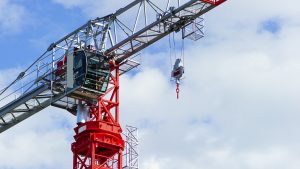A Vancouver technology company formed to transfer a wastewater, phosphate-recovery system, invented by a team of University of B.C. engineers, has installed the first commercially-viable system in the City of Edmonton.
Technology
VANCOUVER
A Vancouver technology company formed to transfer a wastewater, phosphate-recovery system, invented by a team of University of B.C. engineers, has installed the first commercially-viable system in the City of Edmonton. Ostara Nutrient Recovery Technologies Inc. has been working with a demonstration plant, known as a reactor, since late 2005 in Edmonton. The reactor captures mainly phosphates, but also some other nutrients such as nitrates from municipal waste materials and uses them in a slow-release, granular fertilizer. The success of the demo phase has lead to the first commercial scale installation in North America with the plant starting up in May.
Ahren Britton P.Eng., Ostara’s chief technology officer, said the system – which has been five years in trials and demonstrations – is now being looked at by municipalities in Canada, especially the Prairies, and also in the U.S. The technology is especially attractive to municipalities that discharge into landlocked lakes or rivers. During summer, water levels drop and municipalities, such as those on the Prairies, have difficulties meeting regulatory dilution standards. Phosphates and nitrates lead to algae growth, endangers fish habitat and species but can also crystallize causing blockages and cracking pipes in treatment plants. The Ostara technology recovers 85 per cent of phosphates and other nutrients.
“Calgary, Winnipeg and Saskatoon have all expressed an interest in the technology and we are hoping to roll it out across Canada,” says Britton, who is a coinventor. In the U.S., it is also drawing attention. A pilot project at the Hampton Roads Sanitation District’s Nansemond wastewater treatment plant in Suffolk, Virginia, successfully completed trials in March 2007. A second U.S. pilot project is now under development in Tigard, Oregon. Britton said he has also heard from B.C. cities such as Salmon Arm, which maintains stringent water quality as its discharge goes to Shuswap Lake, a major tourism retreat.
Dr. Donald Mavinic, who lead the UBC engineering team that devised the technology, said there is a worldwide demand for phosphate and a looming shortage occurring of high-quality phosphate that is now mined. “Everything living (plants, animals, and humans) needs phosphates,” he says. Fertilizers utilize a high phosphate content to encourage plant growth and it is passed through the food chain into plants and animals. Today, most of the world’s usable supply comes from North Africa. “There is an estimated 50 years supply (worldwide) left,” he says, adding that there are other mines, but they contain high levels of contaminates that many countries find unacceptable.
Recovered phosphates and nutrients are being recycled into a product known by the trademark name Crystal Green, a high-end product directed at landscapers, greenhouse growers, park use, and golf course greens keepers. Ostara and the City of Edmonton have agreed to split the revenues that come from the sale of the Crystal Green.
The UBC development team consisted of Mavinic (professor of civil engineering), Dr. Noboru Yonemitsu (professor of civil engineering), Fred Koch, UBC research associate and Ahren Britton (a grad student in environmental engineering at the time).
In 2005, the rights to the technology were licensed to Ostara as a means of taking the research into the mainstream market. UBC retained royalties and ownership rights in Ostara and Britton moved to Ostara to help bring the technology to market.
The technology was first tried five years ago in two pilot projects (Penticton and the Greater Vancouver Regional District’s Lulu Island). The demonstration reactor was then taken to Edmonton’s Gold Bar for 2005-2006 successful trials and has now moved to the U.S. doing demonstrations in Virginia and Oregon. The new commercial-scale reactor was installed in Edmonton with two to four expected to follow in the next two years. Each reactor has a cost of $2 to $4 million and can extract enough nutrients from wastewater to produce 200 tons of fertilizer a year. The contractor for the Edmonton installation was Maple Reinders Constructors Ltd. The reactor was built by Axton Incorporated in Delta and shipped to site.
The installation of a project hinges upon a city or municipalities size, says Britton, which should have a population greater than 100,000 to generate enough waste material to be viable. However, a food processing plant can add to the waste material and can impact the population figure, says Britton. The technology was supported by BC Hydro, engineering firm Stantec Inc., Vancouver-based NORAM Engineering and Constructors Ltd., the Canadian federal government’s Natural Sciences and Engineering Research Council, National Research Council and Sustainable Development Technology.
“It’s been exciting,” say Britton, “Watching it go from something developed in the lab to something that is now being installed for use.” The company estimates there are 400 wastewater treatment plants in North America and 500 in Europe that are candidates for the new technology.










Recent Comments
comments for this post are closed